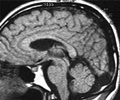Vitamin D deficiency can lead to health problems such as osteomalacia (softening of the bones) and other chronic diseases.

TOP INSIGHT
It is very concerning to see how vitamin D deficient the UK South Asian population are.
Although UK Biobank data cannot be used to formally estimate the true prevalence of vitamin D deficiency in a population it provides a snapshot of the situation.
Researchers found that 20 percent of the UK Biobank South Asians had a very severe deficiency (<15nmol/L) of the vitamin, whilst 50 percent were severely deficient (<25nmol/L). It was found that people from Pakistani communities were more likely to be deficient, with median vitamin D levels of 19nmol/L, compared to levels of 24nmol/L and 26nmol/L for people from Indian and Bangladeshi backgrounds.
Lead author Dr Andrea Darling, Post-Doctoral Research Fellow at the University of Surrey, said: "It is very concerning to see how vitamin D deficient the UK South Asian population are.
"Measures such as increasing vitamin D intake, through diet or supplementation, as well as increasing sunlight exposure (within safe limits) can help raise vitamin D levels. Public health interventions are needed to prevent and treat vitamin D deficiency in these communities".
Vitamin D levels varied by geographic location, with South Asians living in Scotland having low levels (19nmol/L), as did those living in Northern England, Midlands and Wales (19-20nmol/L). London and the South East had slightly higher levels (24-25nmol/L) but deficiency was still very prevalent.
Professor Sue Lanham-New, Head of the Department of Nutritional Science, at the University of Surrey, said: "Our findings show in our research sample, that those from Pakistani communities, aged between 40 - 59 years old, who have a high body mass index, have the highest risk of having a vitamin D deficiency. This puts them at increased risk of developing non-communicable diseases such as some cancers and compromises their skeletal health. The identification of those most vulnerable to vitamin D deficiency will hopefully lead to targeted public health campaigns to address this issue."
Source-Eurekalert
 MEDINDIA
MEDINDIA




 Email
Email










